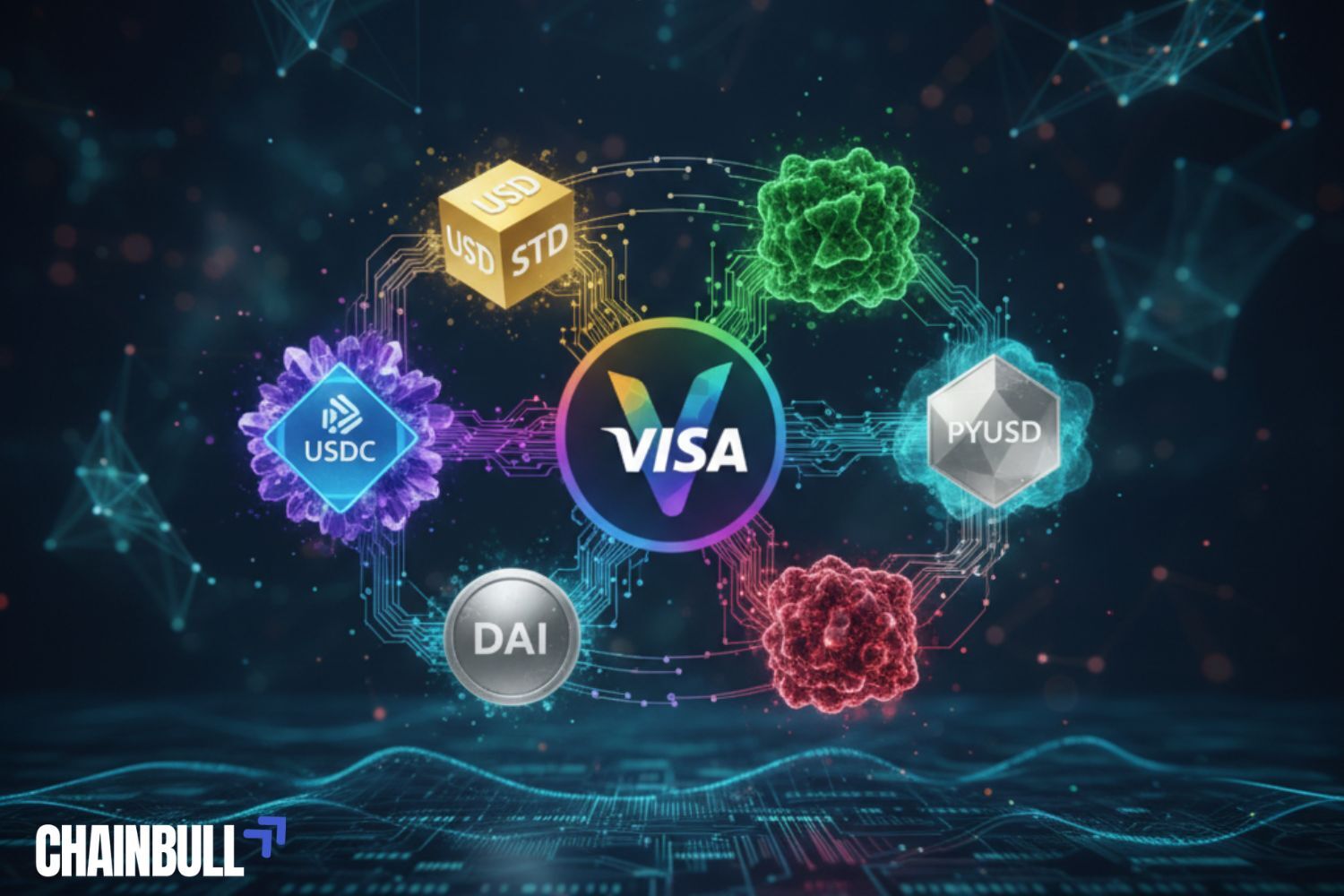

Visa is venturing further into the digital asset space by announcing support for four stablecoins that run on four different blockchains. This information was shared by CEO Ryan McInerney. By adding this feature, Visa is aligning with its long-term goals to settle transactions more efficiently and make cross-border payments more flexible.
On the company’s fourth-quarter earnings call held on Tuesday, McInerney informed that through this new arrangement, Visa will be capable of accepting and converting stablecoins that represent two different currencies into more than 25 traditional fiat currencies. This endeavor serves as a bridge to the future, wherein blockchain-based payment methods will be seamlessly integrated within the global network provided by Visa.
According to McInerney’s words, Visa’s card spending linked to stablecoins, which is the dollar value of purchases made through such cards, reached four times the amount in the last quarter of 2023 compared to the same quarter in 2022. The rapid growth is indicative of a rising trend in user adoption of transactions denominated in stablecoins when merchants and consumers exist, especially in geographical areas where fiat remittances are either costly or impractical.
To date, Visa has demonstrated an exemplary leadership role interrogating the issue of the potential of stablecoins within the fold of conventional financial institutions. Last September, the payments titan, as part of a limited-time campaign, unveiled a transnational payment route utilizing stablecoins. The option was henceforth heralded as an elegant feedback method for sped-up international funds transfers, which are also cost-efficient. The enterprise’s posture suggests a growing trust in stablecoins following a new set of regulations, with USD-pegged tokens gaining more clarity in the U.S.
McInerney also revealed that Visa has been the enabler of more than $140 billion worth of crypto and stablecoin transactions since 2020. Out of the entire amount, users have utilized Visa credentials for a little over $100 billion worth of purchases of cryptocurrencies and stablecoins. Presently, the company’s expanding network comprises more than 130 programs for the issuance of stablecoin-linked cards, which are spread across more than 40 countries.
Visa’s recent announcement is a step towards the integration of the two worlds: traditional finance and blockchain infrastructure. According to McInerney, Visa is facilitating banks to produce (mint) and destroy (burn) their own stablecoins; thus, there is a possibility of a transition to decentralized settlement in the conventional financial ecosystem.While the trend of stablecoin usage is spreading worldwide, Visa’s presence on various blockchains is an indication of the company’s strategic move to the digital currency arena and payment revolution.
Crypto evolves every second—make sure you don’t miss a beat. Visit Chainbull for expert insights, detailed market breakdowns, and trusted updates from the world of blockchain and digital assets.
